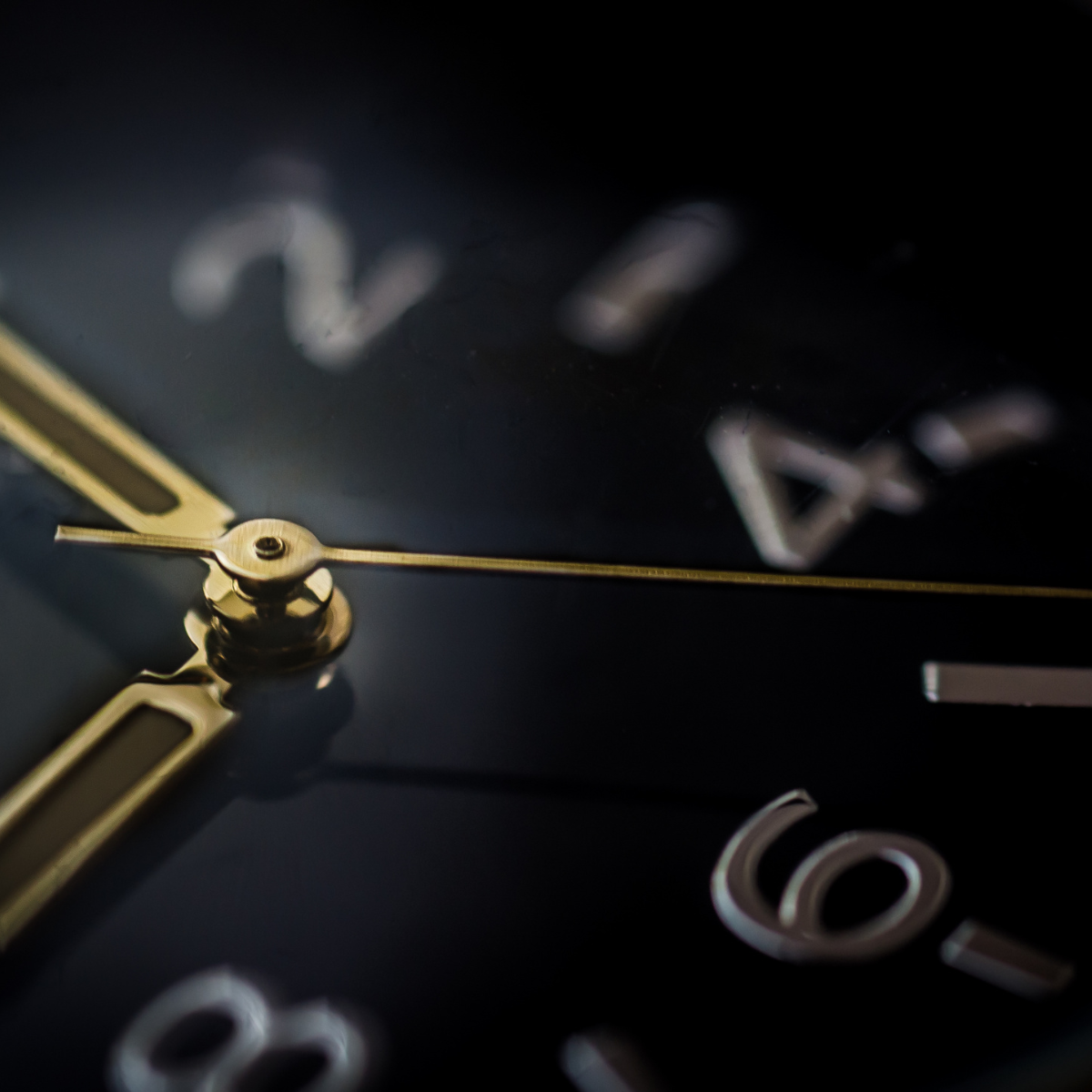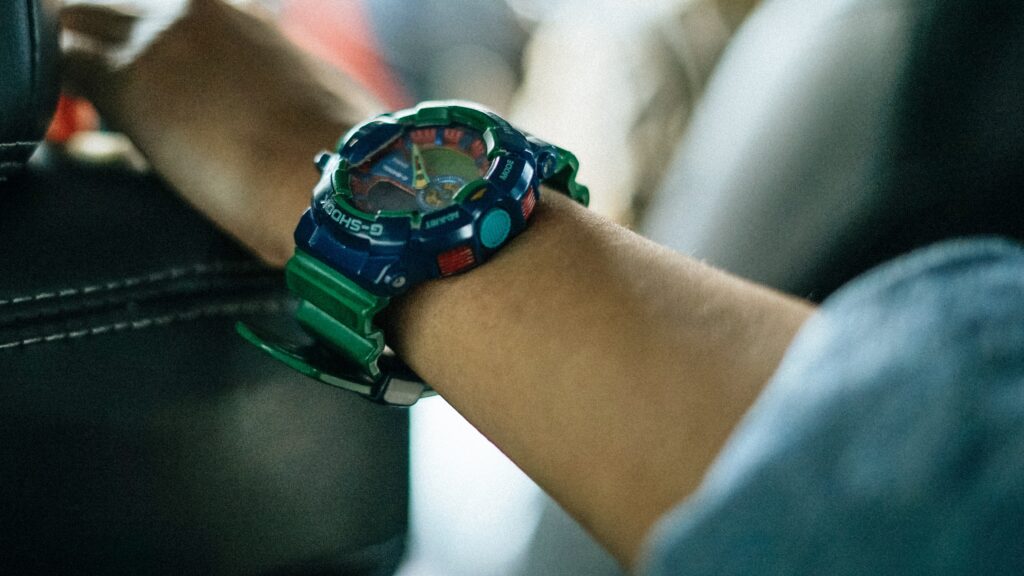
“The Complete Watch Manufacturing Process by MPI” is an informative video that sheds light on the intricate and meticulous process followed by MPI Industries Limited in the production of watches. This video delves into the step-by-step demonstration of the entire manufacturing process, providing valuable insights into the craftsmanship of creating timepieces. Created by MPI Industries Limited, this video offers a comprehensive visual guide for individuals interested in understanding the intricate details involved in watch manufacturing.
Covering each phase of the process, this video showcases the expertise and precision required at each step, ensuring the creation of high-quality timepieces. From the initial design and prototyping stages to the assembly and testing phases, MPI Industries Limited takes viewers on a journey through the meticulous craftsmanship and attention to detail that goes into each watch. With insightful narration and detailed visuals, this video by MPI Industries Limited serves as an excellent resource for anyone seeking a comprehensive understanding of the watch manufacturing industry.
Design and Development
Click Here To Read About Seiko Watches and Rolex Watches!
Creating Watch Concepts
In the design and development phase, the first step is to create watch concepts. This involves brainstorming, sketching, and creating initial designs. The goal is to come up with unique and innovative ideas that will appeal to consumers. It is important to consider factors such as functionality, aesthetics, and market trends during this stage. You want to create a concept that is not only visually appealing but also practical and marketable.
Researching Consumer Trends
After creating watch concepts, it is crucial to research consumer trends. This involves studying the market, analyzing customer preferences, and identifying emerging trends in the watch industry. By understanding what consumers are looking for in a watch, you can tailor your design to meet their needs and preferences. This research also helps in identifying gaps in the market and potential opportunities for innovation.
CAD Design
Once the watch concepts and consumer trends have been thoroughly researched, the next step is to create Computer-Aided Design (CAD) models. CAD software allows designers to create 3D models of the watch, enabling them to explore different design options and make necessary modifications. CAD design also helps in visualizing the final product, making it easier to communicate the design to other stakeholders involved in the manufacturing process.
Prototype Development
After the CAD design is finalized, prototypes of the watch are developed. Prototyping is a crucial step in the design and development process as it allows for testing and refinement of the design. Prototypes can be created using various materials, such as plastic or metal, depending on the desired outcome. The goal of prototyping is to ensure the functionality, durability, and aesthetics of the watch design before moving forward with mass production.
Sourcing Materials
Selection of Watch Components
Sourcing the right watch components is essential for creating a high-quality timepiece. Components such as watch movements, dials, hands, crowns, pushers, crystals, and straps or bracelets need to be carefully selected. Factors such as reliability, compatibility, and availability of the components should be considered. It is important to establish relationships with reliable suppliers who can provide quality components that meet the specifications and requirements of the watch design.
Sourcing Sustainable Materials
In line with the growing demand for sustainability, sourcing sustainable materials for watch manufacturing is crucial. This involves looking for suppliers who offer materials that are environmentally friendly, ethically sourced, and have a minimal impact on the ecosystem. Sustainable materials may include recycled metals, ethically sourced leather, or alternative materials such as plant-based or recycled plastics. By choosing sustainable materials, watch manufacturers can contribute to a greener and more responsible industry.
Quality Control of Incoming Materials
To ensure the quality of the watch components, it is important to implement rigorous quality control measures. This involves inspecting and testing the incoming materials to ensure they meet the required standards. Quality control may include visual inspection, dimensional checks, material testing, and certification verification. By conducting thorough quality control checks, manufacturers can identify any defects or deviations from the desired specifications and take corrective actions accordingly.
Manufacturing Watch Components

Click Here To See More Luxury Watches.
Case Production
The production of watch cases involves various manufacturing processes. These can include cutting, shaping, and polishing metal or plastic materials to create the desired case design. The type of case production technique used may vary depending on the material and design requirements. Precision and attention to detail are crucial during this stage to ensure that the cases are manufactured accurately and meet the design specifications.
Dial Manufacturing
Dial manufacturing is another important aspect of watch component production. Dials are typically made of metal or other materials such as ceramic or enamel. The manufacturing process may involve stamping, engraving, painting, or applying decorative elements to the dial. The goal is to create a dial that is not only visually appealing but also functional and legible. Precision and craftsmanship are key in dial manufacturing to achieve the desired aesthetic and ensure the quality of the final product.
Hands Manufacturing
The hands of a watch are responsible for indicating the time. They are usually made of thin metal strips that are shaped and polished to the desired design. Hands manufacturing requires precision and delicacy to achieve the correct shape and size. Different watch models may require different hand designs, such as sword hands, dauphine hands, or skeletonized hands. The hands must be manufactured with accuracy to ensure that they function properly and are visually aligned with the dial.
Movements and Mechanisms
The movement is the heart of a watch and is responsible for keeping accurate time. There are different types of movements, including mechanical, automatic, and quartz movements. The manufacturing of movements involves intricate mechanical processes, such as assembling gears, springs, and other components. Attention to detail and precision are crucial during movement manufacturing to ensure the accuracy and reliability of the watch. The choice of movement will depend on the desired functionality and price range of the watch.
Crown and Pushers Production
The crown and pushers of a watch allow for various functions, such as adjusting the time and date. The manufacturing process involves shaping and polishing metal or plastic materials to create these components. The crown and pushers must be manufactured with precision to ensure smooth operation and longevity. The design of these components should also align with the overall aesthetic of the watch.
Crystal Production
The crystal of a watch is the transparent covering that protects the dial. Crystals are commonly made of mineral glass or synthetic sapphire. The production process may involve cutting, shaping, and polishing the crystal to the desired size and shape. Precision is important in crystal production to ensure a perfect fit and clarity. The choice of crystal material will depend on factors such as durability, scratch resistance, and cost.
Strap and Bracelet Manufacturing
Straps and bracelets are an integral part of a watch, providing comfort and aesthetics. Straps can be made from various materials, such as leather, rubber, fabric, or metal. Bracelets are usually made of metal links that are assembled and polished to the desired design. Strap and bracelet manufacturing involves cutting, sewing, or assembling the materials and attaching appropriate fasteners or clasps. Attention to detail and craftsmanship are important to ensure the quality and durability of the straps and bracelets.
Watch Assembly

Cleaning and Preparing Components
Before the watch components can be assembled, they need to be thoroughly cleaned and prepared. This involves removing any dirt, dust, or debris from the components to ensure they are free from contaminants. Cleaning can be done using specialized equipment and processes to avoid damage to the components. Proper preparation of the components ensures that they are in the best condition for assembly.
Movement Assembly
The assembly of the watch movement is a critical step in the watch manufacturing process. This involves carefully assembling the various components of the movement, such as the gears, springs, and balance wheel. The components need to be aligned, lubricated, and secured to ensure the smooth operation and accuracy of the movement. Precision and attention to detail are key during movement assembly to ensure the reliable performance of the watch.
Dial Attachment
Once the movement is assembled, the dial is attached to the movement. This is done with precision to ensure the dial is properly aligned, and all functions are synchronized. The dial attachment also involves securing the hands to the dial, ensuring they are positioned correctly and move smoothly. Proper dial attachment is crucial for the overall functionality and aesthetics of the watch.
Hands Assembly
After the dial attachment, the hands of the watch are assembled. This involves placing the hands onto the central post of the movement and ensuring they are securely fastened. The hands must be positioned correctly to indicate the time accurately. Delicacy and precision are required during hands assembly to avoid any damage to the dial or movement.
Inserting Crown and Pushers
The crown and pushers are then inserted into the watch case. This involves carefully aligning and securing these components to ensure they function properly. The crown is responsible for adjusting the time and date, while pushers may be used to initiate additional functions, such as a chronograph. It is important to ensure that the crown and pushers are inserted correctly and operate smoothly.
Attaching Crystal
The next step in watch assembly is attaching the crystal to the case. The crystal may be secured using various techniques, such as glue or pressure fitting, depending on the design and material of the crystal. Proper alignment and sealing are crucial during crystal attachment to ensure water resistance and protection of the dial.
Strap or Bracelet Attachment
The final step in watch assembly is attaching the strap or bracelet to the watch case. This involves connecting the strap or bracelet to the lugs of the case using appropriate fasteners or clasps. Attention to detail is important during strap or bracelet attachment to ensure a secure and comfortable fit.
Quality Control

Visual Inspection
Each assembled watch undergoes a visual inspection to check for any visible defects or imperfections. Qualified inspectors carefully examine the watch components, including the case, dial, hands, crown, pushers, crystal, and strap or bracelet. Any inconsistencies or flaws are documented and addressed accordingly. Visual inspection helps ensure that the watches meet the desired quality standards and specifications.
Functional Testing
Functional testing is carried out to ensure that the watch performs its intended functions accurately. Various tests are conducted, such as timekeeping, date change, and chronograph functions. The watches are carefully monitored, and any deviations or malfunctions are identified and rectified. Functional testing is crucial to guarantee the reliability and accuracy of the watches.
Water Resistance Testing
For watches designed to be water-resistant, water resistance testing is performed. The watches are subjected to specific pressure and immersed in water to check their resistance against water ingress. Water resistance testing helps validate the watch’s ability to withstand water exposure, ensuring its durability and suitability for different environments.
Accuracy Testing
Accuracy testing is carried out to verify the timekeeping performance of the watches. The watches are placed in various positions and subjected to different temperatures to assess their accuracy. This testing helps ensure that the watches keep time within the specified tolerances.
Stress Testing
Stress testing involves subjecting the watches to various extreme conditions to assess their durability and resistance to wear and tear. This may include subjecting the watches to high temperatures, intense vibrations, or extreme pressures. Stress testing helps identify any weaknesses or potential issues with the watches’ construction and durability.
Chronograph Function Testing
If the watch has a chronograph function, specific tests are conducted to assess the accuracy and functionality of this feature. These tests involve timing events or measuring elapsed time using the chronograph function. Chronograph function testing ensures that the watch accurately measures and records time intervals.
Finishing and Polishing
Brushing and Polishing Metal Components
Metal components, such as the case, crown, pushers, and bracelet, undergo brushing and polishing to enhance their appearance. Brushing creates a textured finish, while polishing creates a smooth, reflective surface. These processes are carried out with precision and attention to detail to achieve the desired finish.

Applying Surface Treatments
Surface treatments may be applied to the watch components to enhance their aesthetics or provide additional protection. This can include processes such as coating, plating, or engraving. Surface treatments are carefully applied to ensure a consistent and durable finish.
Plating or Coating Application
Plating or coating application may be done to achieve specific color or material finishes. This process involves applying a thin layer of metal or coating material onto the surface of the watch components. Plating or coating is carried out using specialized techniques to ensure uniformity and durability.
Surface Protection
To protect the finishes and minimize scratches or damage, a protective layer may be applied to the watch components. This can include applying a clear lacquer, using specialized coatings, or utilizing specific surface treatments. Surface protection helps maintain the aesthetics and longevity of the watch components.
Watch Enclosure
Case Back Attachment
The case back of the watch is attached to the case to enclose the movement and other internal components. This can be done using various methods, such as screwing, snapping, or pressing. Proper alignment and sealing are crucial during case back attachment to ensure the integrity and water resistance of the watch.
Gasket Installation
Gaskets are fitted into the case to provide a waterproof seal between the case and the crystal, case back, and other components. The gaskets are carefully installed to ensure a watertight fit and protection against moisture and dust ingress. Proper gasket installation is vital for the watch’s water resistance.
Sealing and Waterproofing
Before the final enclosure of the watch, additional sealing and waterproofing measures may be taken. This can involve applying lubricants or sealants to critical parts, such as the crown, pushers, or case back. Waterproofing ensures that the watch is fully protected against water, dust, and other environmental elements.
Final Assembly and Calibration
Attaching Watch Movement to the Case
The watch movement is securely attached to the case, ensuring proper alignment and stability. This step often involves delicate manual work to ensure that the movement fits snugly and operates smoothly within the case.
Final Hands Calibration
The hands of the watch are calibrated to ensure accurate timekeeping. This involves precisely aligning the hands to the hour, minute, and second markers on the dial. Careful adjustment and alignment are required to achieve optimal functionality and visual appeal.
Testing Functions and Adjusting Accuracy
Once the watch movement, hands, and other components are assembled, the watch undergoes thorough testing. This includes testing its timekeeping accuracy, date change functionality, and any other specific features or complications. Any necessary adjustments or calibrations are made to ensure that the watch performs flawlessly.
Strap or Bracelet Final Attachment
The strap or bracelet is securely attached to the watch case, completing the final assembly. Great care is taken to ensure proper alignment, fit, and comfort. The strap or bracelet is adjusted to the customer’s desired size or specifications, ensuring a comfortable and secure fit on the wrist.
Quality Assurance
Detailed Inspection
Before the watches are deemed ready for sale, they undergo a detailed inspection. Qualified inspectors meticulously examine each watch for any defects, imperfections, or deviations from the required standards. This includes checking the aesthetics, functionality, and overall quality of the watches.
Performance Testing
Performance testing is carried out to ensure that the watches meet the specified performance criteria. This involves testing their timekeeping accuracy, functionality of complications, and resistance to various environmental conditions. Performance testing helps verify that the watches perform reliably in real-world situations.
Aesthetics Assessment
The aesthetic aspects of the watches are assessed to ensure they meet the desired design and visual appeal. This includes checking for any inconsistencies in the finishing, polishing, or surface treatments. Aesthetics assessment ensures that the watches are visually pleasing and meet customers’ expectations.
Reliability and Durability Checks
Before the watches are released for sale, they undergo reliability and durability checks. This involves subjecting the watches to simulated wear and tear or extreme conditions to assess their robustness. Reliability and durability checks help ensure that the watches can withstand daily use and last for a long time.
Conclusion
The design and development, sourcing materials, manufacturing watch components, watch assembly, quality control, finishing and polishing, watch enclosure, final assembly and calibration, and quality assurance are all crucial steps in the comprehensive process of watch manufacturing. Each step requires attention to detail, precision, and careful craftsmanship to create high-quality timepieces that meet the desired standards and exceed customer expectations. By following these steps, watch manufacturers can ensure the creation of exceptional watches that stand the test of time.
Is The Rolex Submariner Better – Click Here to Learn More!

